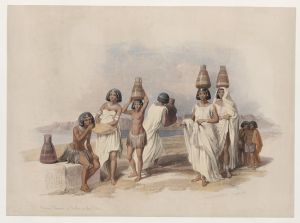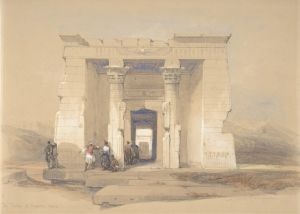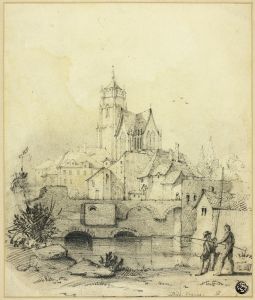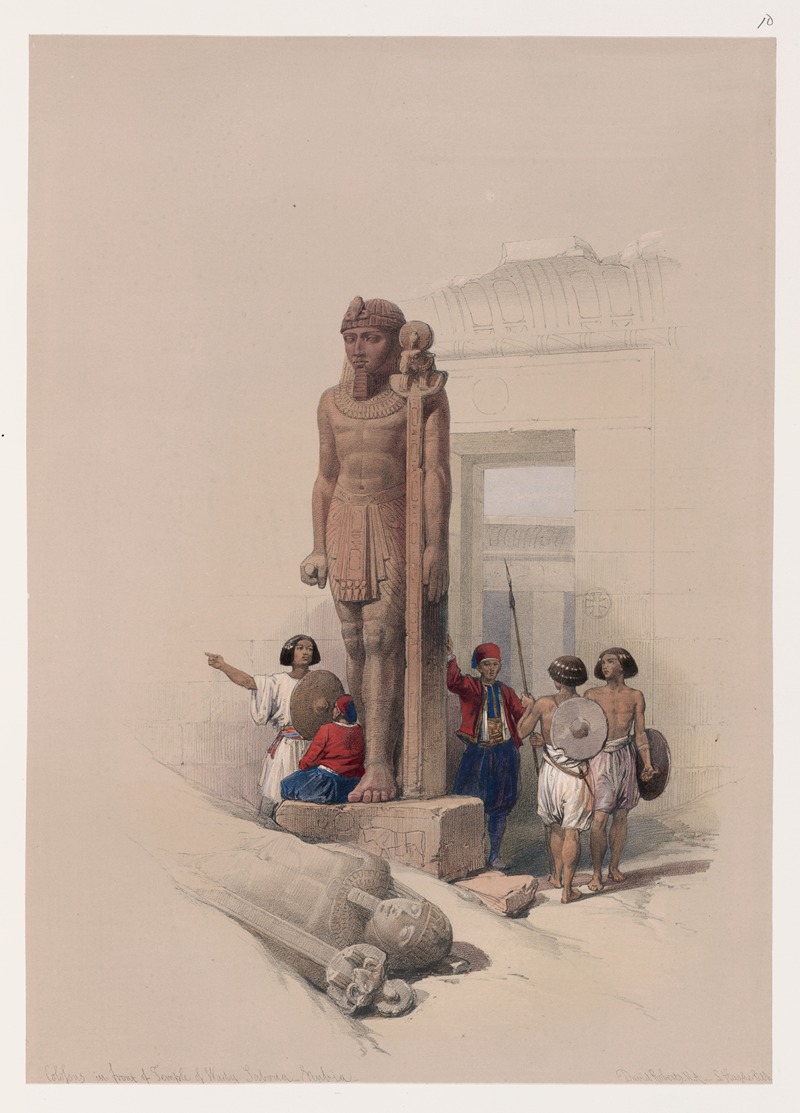
Colossus in front of Temple of Wady Saboua [Wadi al-Sabua], Nubia.
A hand-painted replica of David Roberts’s masterpiece Colossus in front of Temple of Wady Saboua [Wadi al-Sabua], Nubia., meticulously crafted by professional artists to capture the true essence of the original. Each piece is created with museum-quality canvas and rare mineral pigments, carefully painted by experienced artists with delicate brushstrokes and rich, layered colors to perfectly recreate the texture of the original artwork. Unlike machine-printed reproductions, this hand-painted version brings the painting to life, infused with the artist’s emotions and skill in every stroke. Whether for personal collection or home decoration, it instantly elevates the artistic atmosphere of any space.
David Roberts was a Scottish painter known for his detailed and historically significant lithographs of Egypt and the Near East. One of his notable works is "Colossus in front of Temple of Wady Saboua [Wadi al-Sabua], Nubia," which is part of his larger collection of illustrations documenting his travels in the region during the 19th century. Roberts embarked on his journey to Egypt and the Near East in 1838, and his works from this period are considered some of the most important visual records of these areas before the widespread advent of photography.
The Temple of Wadi al-Sabua, located in Nubia, is one of the many ancient sites Roberts visited and captured in his art. Wadi al-Sabua, meaning "Valley of the Lions," is named for the avenue of sphinxes that originally led to the temple. The temple itself was constructed during the reign of Pharaoh Ramses II, one of ancient Egypt's most prolific builders. It was part of a series of temples built by Ramses II in Nubia to demonstrate his power and to honor the gods.
Roberts' depiction of the "Colossus in front of Temple of Wady Saboua" captures the grandeur and scale of the ancient Egyptian architecture. His lithographs are characterized by their attention to detail and accuracy, providing a valuable historical record of these sites. The colossi, or large statues, often depicted Ramses II himself, and were intended to convey the might and divine nature of the pharaoh.
The lithographs produced by Roberts were based on sketches he made during his travels. These were later turned into detailed prints with the help of lithographer Louis Haghe. The collection was published as "The Holy Land, Syria, Idumea, Arabia, Egypt, and Nubia" between 1842 and 1849. This publication was well-received and remains a significant resource for historians and art enthusiasts interested in 19th-century views of the Middle East and North Africa.
Roberts' work is particularly valued for its historical accuracy and artistic quality. At a time when few Europeans had traveled to these regions, his illustrations provided a glimpse into the ancient world that was both educational and inspiring. His ability to capture the essence of these monumental structures has left a lasting legacy in the field of Orientalist art.
The Temple of Wadi al-Sabua itself has undergone significant changes since Roberts' time. In the 1960s, due to the construction of the Aswan High Dam and the subsequent creation of Lake Nasser, many Nubian monuments were relocated to prevent them from being submerged. The temple was moved to a new location, preserving it for future generations.
David Roberts' "Colossus in front of Temple of Wady Saboua" remains an important piece of art that not only showcases his skill as an artist but also serves as a historical document of Egypt's rich architectural heritage. His works continue to be studied and admired for their contribution to the understanding of ancient Egyptian culture and the 19th-century European perspective on the Middle East.






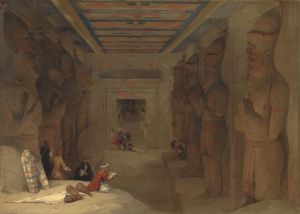
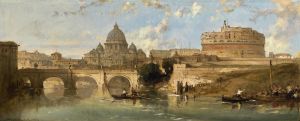

![Excavated Temple of Gyrshe [Gerf Hussein], Nubia.](/imgs/217480/s/david-roberts-excavated-temple-of-gyrshe-gerf-hussein-nubia-fb4767b0.jpg)


![Karnac [Karnak]. Nov. 29th, 1838](/imgs/217503/s/david-roberts-karnac-karnak-nov-29th-1838-5a10b435.jpg)
![One of two colossal statues of Rameses [sic] II. Entrance to the Temple at Luxor.](/imgs/217522/s/david-roberts-one-of-two-colossal-statues-of-rameses-sic-ii-entrance-to-the-temple-at-luxor-473c42e1.jpg)
![Temple of Kalabshee [Kalabsha, Kalâbishah], Nubia. Nov. 1838.](/imgs/217548/s/david-roberts-temple-of-kalabshee-kalabsha-kalabishah-nubia-nov-1838-be0ac440.jpg)

